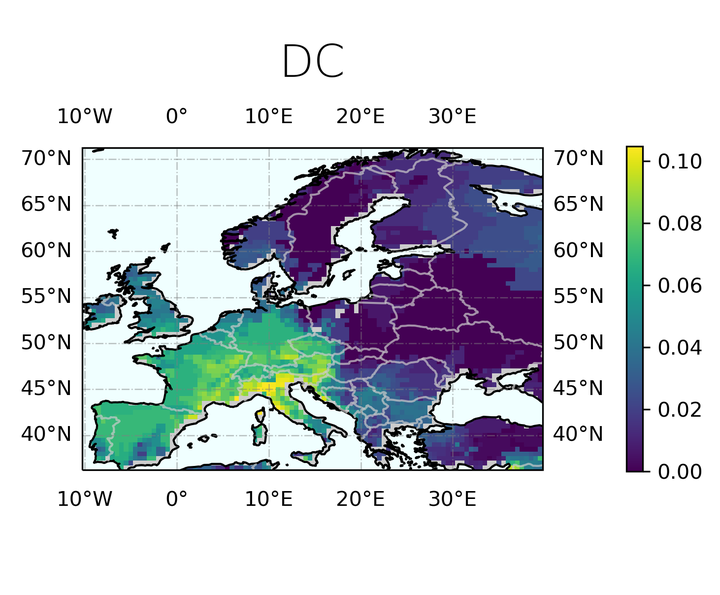Sources, propagation and sinks of Europe’s major heat waves; a complex network analysis of heat extremes
A contribution to the EGU23 Annual Meeting
 Average “degree of centrality” (DC) over Europe in during the heatwave of Aug 2003. The DC is related with the “spread” of the heatwave, which in this case was particularly recurrent in northern Italy.
Average “degree of centrality” (DC) over Europe in during the heatwave of Aug 2003. The DC is related with the “spread” of the heatwave, which in this case was particularly recurrent in northern Italy.As mentioned in the previous post, this year we had the chance of making a few contributions during the EGU23 conference in Vienna. In this case, we presented our research in the session “Extreme Climate Events: Variability, Mechanisms, and Prediction”, illustrating the potential complex networks (CN) at modelling European heatwaves. You can read a short description of the work here and a link to the slides used during this session here.
We use public data provided by the the European Climate Assessment & Dataset (ECAD), in concrete, the daily gridded maximum temperature maps from E-OBS (1991-2020). In this approach, we are training an Event Synchronization network, which requires the pre-computation of the strength of the heatwave and its delay before starting the modelling with CNs. The CNs are able to compute some coefficients, such as the “degree of centrality” (DC) or the “clustering coefficient” (CC) that are related to the “spread” and “where the core is” of heatwaves.
For example, in the video below you can see the evolution of CC during Aug 2003. This is the 2nd largest heatwave on record and mostly affected western Europe. The heatwave originated in SW Iberia and quickly propagated towards Central Europe reaching southern Scandinavia, where it remained for several days. Then, the heatwave withered away, remaining around the countries in the Mediterranean basin.
We think that this type of results provided by complex networks, might be very helpful to better understand heatwave propagation patterns over Europe. Hopefully this can be then used to increase societal preparedness and our response capacity when heatwaves hit a region.